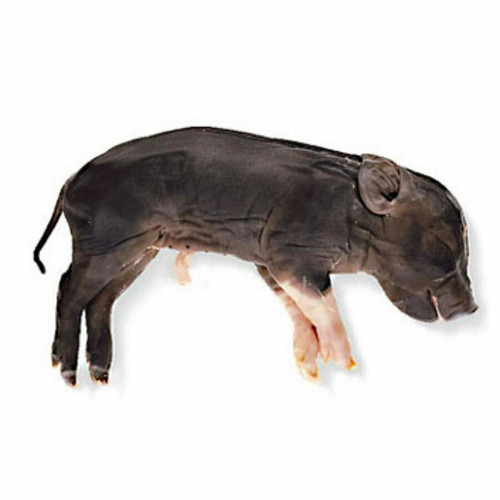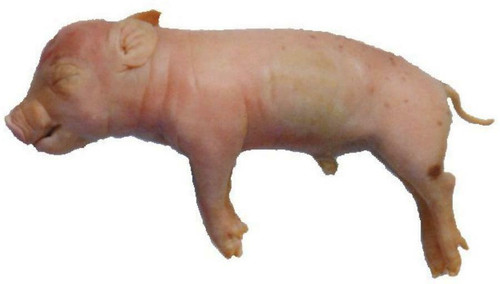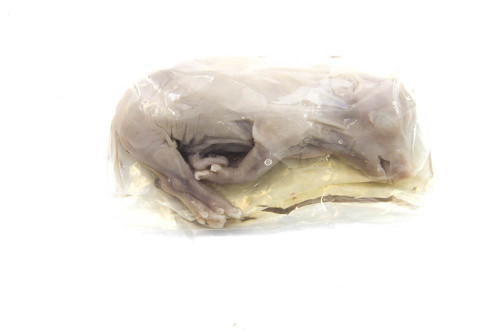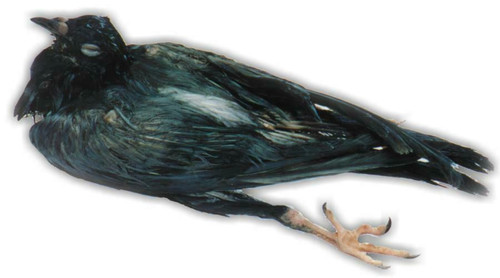DESCRIPTION
This large-sized fetal pig preserved specimen has blood vessels that are double injected with red and blue latex. Fetal pigs are commonly used to study mammal anatomy and they often make excellent classroom dissection activities. The genus and species is Sus domesticus. Pig colors vary between pink and black.
A fetal pig dissection is helpful for anatomy studies because the size of the organs make them easy to find and identify. It is also interesting to do because a lot of the internal anatomy is similar to a human's!
Use a scalpel and other dissection tools to dissect this large fetal pig specimen! You'll learn more about the body's:
- cardiovascular/circulatory system - through the identification & study of body parts such as the ventricles of the heart, the left and right atrium of the heart, the aorta, etc.
- digestive system - through the identification & study of body parts such as the taste buds, esophagus, gallbladder, large intestine, small intestine, etc.
- respiratory system - through the identification & study of the lungs, trachea, larynx, etc.
- reproductive system - through the identification & study of body parts such as the ovaries/testes, epididymis, umbilical arteries & umbilical cord, etc.
- urinary system - through the identification & study of body parts such as the urinary bladder, ureter, kidney, urethra, etc.
- endocrine system - through the identification & study of body parts such as the pancreas, thyroid gland, adrenal glands, thymus, etc.
- skeletal system - through the identification & study of body parts such as the skull, spine, ribs, etc.
- and so much more!
Dissecting a fetal pig specimen provides a memorable and insightful learning experience for students of all ages! Whether through a dorsal or ventral viewpoint, fetal pig dissections can teach us so much about the intricacies of the body's thoracic cavity, abdominal cavity, and more.
To help you through your dissection, an inexpensive basic pig dissection guide is available, as is a more extensive and detailed pig dissection guide.
Note: Specimens are initially preserved with a formaldehyde preservative solution, the best animal tissue fixative. The formaldehyde is then displaced first with water and finally with a glycol solution to produce a moist, low-fume specimen which will not decay over time.
HST Specimen Guarantee
In sealed, original packaging, our preserved specimens are guaranteed to remain fully preserved and free of decay for six months from the date of purchase.
Once the original package is opened, use specimen within one month. For best results, observe the following storage procedures:
- Store specimen in heavy-duty, zip-lock bags to minimize drying between dissections.
- Specimen will slowly dry out or become contaminated in zip-lock bags; add a teaspoon of Specimen Holding Fluid to retain moisture.
- Freezing or refrigeration is not necessary and may damage fragile tissues.
![]() WARNING: This product can expose you to chemicals including Formaldehyde, which is known to the State of California to cause cancer, and Methanol, which is known to the State of California to cause birth defects or other reproductive harm.
WARNING: This product can expose you to chemicals including Formaldehyde, which is known to the State of California to cause cancer, and Methanol, which is known to the State of California to cause birth defects or other reproductive harm.
MORE INFORMATION BOX
More Information
CONTENTS TAB
SPECIFICATIONS TAB







